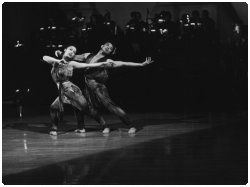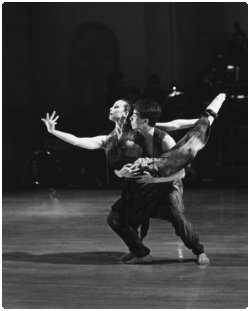Dance critic Nala Najan, writing for the international magazine of Indian music and dance, SRUTI, asked Janaki Patrik: “What inspired you as a choreographer/performer to create MANDALA X ? as a contemporary exposition, not as an exposition of Indian dance with a gloss of contemporary dance; to visualize in contemporary terms (cross-cultural terms)…” Ms. Patrik answered:In the early 1970’s when I first read the Nasadiya Sukta, I felt as if I had been hit by a bolt of lightning. All the certainty about the nature of the divine creative “being” – which I had expected to find in India’s most ancient sacred hymns – was shattered by the final verse of The Hymn of Creation, Rig Veda X.129:
From where this creation arose –
Whether it is upheld and sustained or not –
Whoever looks down upon it from the highest heaven –
Indeed He knows, …. or perhaps He does not know.
Since reading the final line of this hymn, ideas about how to visualize its brooding doubt – musically and choreographically – had been simmering in my mind.

I never conceived of the appropriate medium for this project as being classical dance or music. The nature of classicism seems to me to involve building expectations and structures, from which final resolution and fulfillment can be created. Whether it is a tihai (a thrice-repeated rhythmic pattern), which ends on the sam (the first beat of a time cycle), or dissonance and chaos which resolve on the tonic, classical arts play by the “rules of the game”. No matter how much the players push against the boundaries of style and technique – no matter how much they flirt with the dangerous world “outside” – classical artists nevertheless tend to create a jewel-like and self-contained perfection. No loose ends. No unanswered questions.

Wild animal energy, explosive and uneasy messiness, oozing outside boundaries of recognizable style – a constant, off-balance sense of “work-in-progress” – a sense of art out of control and just about to break out of the boundaries of performance space and into the “real” world …. these are some of the images and ideas which motivated MANDALA X’s creation.
Kathak, Bharata Natyam, Manipuri, Hindustani music — all classical music and dance styles of India — none by itself could express fully what I visualized. I did not want any homogeneity which classicism often implies: I saw the dancers as a very mixed group of people, physically and stylistically. I wanted the beauty of creation’s diversity to be evident in the very bodies on which the choreography would manifest.
As traditional and ancient as the Vedic chant from which MANDALA X is derived may appear, the final note on which Dr. Jayaraman chanted the Nasadiya Sukta, thereby signaling the end of this “meditation in movement and sound”, says it all. Peace – Shanti – he chants. But he does not resolve on the tonic. Instead he slides one-half tone up – to the note called RE in the Indian raga system. Question, not answer, even from within the depths of ancient Indian tradition. Musically, choreographically, linguistically – certainty is shattered.
Janaki Patrik, March 1997